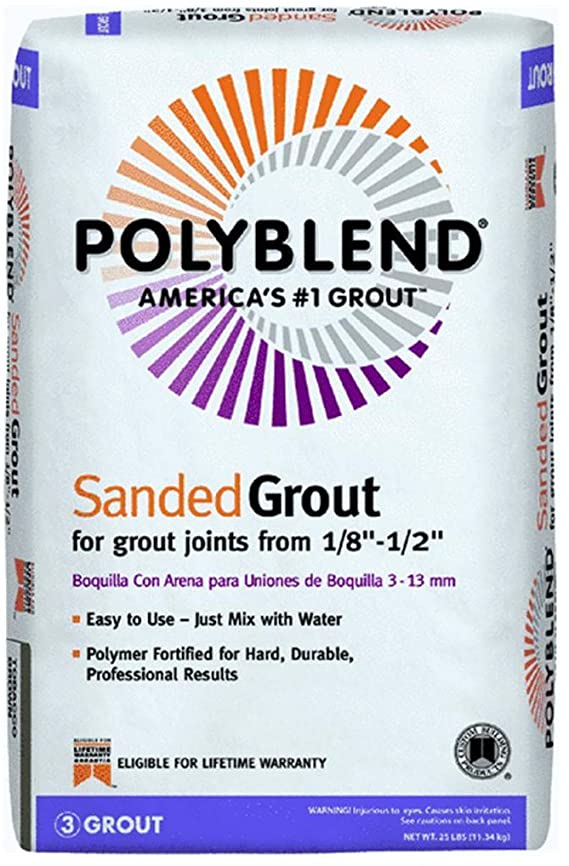After picking out your dream tile, you now have the questions of which grout do I use? Because there are so many different types of tile and types of grout, this can get very confusing on choosing the correct grout type for your project. In this blog, I will discuss when to use sanded grout and when to use unsanded grout and some of the benefits each have.

Sanded grout is recommended for any install using ceramic, porcelain, granites, flamed or brushed marble, terrazzo, rock pebbles or meshed pebbles with a 1/8" or up grout joint. Having this spacing in your tile means there is more room for grout error. Using sanded grout already fixes a majority of these issues you could have if you used unsanded. Sanded grout is unsanded grout with the addition of sand. Due to this addition, the grout becomes extremely strong, almost like putting colored cement in-between your tiles. Now that you have a super strong grout, you do not have to worry about cracks that could occur with the unsanded option. Another benefit of using sanded grout in these situations would be the prevention of leaks. Since the grout is more densely packed, it fills the gap fully and dries down to the same fullness allowing the entire space to be sealed preventing water from seeping through and getting underneath the tile.

Unsanded grout is recommended for any install using any of the above recommended for sanded grout plus polished or honed marble, mosaics, glass, quartz, terrazzo, and pebbles with a 1/8" or smaller grout joint. Sanded grout will SCRATCH polished or honed soft marble surfaces which is why unsanded MUST be use for these materials! This is why when installing marble, the rule of thumb is no larger than a 1/16" grout joint. With this rule in place, you will have clean grout lines that will not have cracking or pockets. A key point to note when using unsanded grout is always make sure the grout is packed down as must as possible. Because this does not have a sand element, when this grout dries, it can shrink together causing these pockets, holes, or cracks in the grout which could also lead to leaks. This is the reason why a 1/8" or smaller grout joint is best because the smaller the space the unsanded grout is going into, the less likely any of these issues will occur.
Being that this is such an important part of tiling, there is always instructions and recommendations on the bag of grout it self. For example, Mapei and other grout companies, list step by step instructions on how to properly use the product with mixing and installing the grout.
In my next Grout Blog Post, I will go over how to install the two types of grout and how to clean each type!
As always, we love customer suggestions on what you would like to read about, so leave us a message or comment on any of our social medias or email us!
If you have any questions or concerns about the above, please do not hesitate to contact us!
Happy Shopping!

